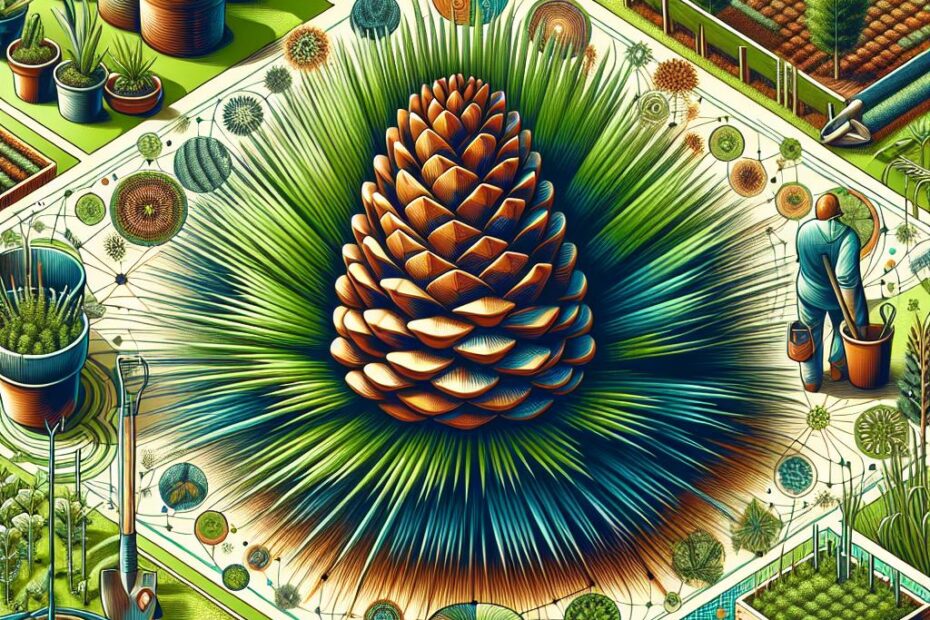Are pine needles good for gardens? This is a common question among gardeners, landscapers, and homeowners who have pine trees in their yard. Pine needles, also known as pine straw, can be a valuable resource for gardening when used correctly. In this article, we will explore the benefits of using pine needles in gardens, provide practical tips for incorporating them into your landscaping, and share some first-hand experiences from gardeners who have successfully used pine needles in their own gardens.
Benefits of Using Pine Needles in Gardens
Pine needles offer several advantages when used in gardens:
-
Mulch: Pine needles make an excellent mulch material for gardens. They help retain moisture in the soil, suppress weed growth, and regulate soil temperature. Unlike other types of mulch, pine needles are lightweight and easy to spread.
-
Acidification: Pine needles are acidic, which makes them ideal for acid-loving plants such as azaleas, rhododendrons, and blueberries. Using pine needles as mulch can help maintain the pH levels of the soil and promote healthy plant growth.
-
Aesthetic Appeal: Pine needles have a natural, rustic appearance that can enhance the visual appeal of gardens and landscaping. They provide a textured, organic look that complements various plantings and hardscape elements.
-
Cost-effective: Pine needles are often readily available for free, especially if you have pine trees on your property. Using them as mulch can help save money on purchasing commercial mulch products.
Practical Tips for Using Pine Needles in Gardens
When incorporating pine needles into your garden, consider the following tips:
-
Collecting Pine Needles: Rake up fallen pine needles from the ground or trim branches to gather fresh pine needles. Avoid using pine needles that are moldy or diseased.
-
Preparing the Soil: Before applying pine needles as mulch, ensure that the soil is well-drained and free of weeds. Add a layer of compost or organic fertilizer to provide nutrients for plants.
-
Applying Mulch: Spread a layer of pine needles evenly around plants, leaving a gap around the stems to prevent moisture buildup. Avoid piling mulch too close to the plant base, as this can lead to rotting.
-
Maintenance: Monitor the mulch layer regularly and replenish it as needed. Over time, pine needles will break down and decompose, adding organic matter to the soil.
Case Studies and First-hand Experiences
Many gardeners have shared their positive experiences with using pine needles in their gardens:
-
Case Study 1: Azalea Garden
- Plants: Azaleas, camellias, and ferns
- Results: Improved soil acidity, reduced weed growth, lush plant growth
- Testimonial: “I have been using pine needles as mulch in my azalea garden for years, and the results speak for themselves. The plants are thriving, and the soil acidity is perfect for their needs.”
-
First-hand Experience: Vegetable Garden
- Plants: Tomatoes, peppers, and cucumbers
- Results: Increased soil moisture retention, fewer pests, bountiful harvest
- Testimonial: “I started using pine needles as mulch in my vegetable garden last season, and I was amazed at how well the plants responded. The soil stayed moist, and I had fewer issues with pests compared to previous years.”
Conclusion
In conclusion, pine needles can be a valuable addition to gardens and landscaping projects. They offer benefits such as mulching, soil acidification, and aesthetic appeal. By following practical tips for using pine needles in gardens and learning from the experiences of other gardeners, you can make the most of this natural resource. Consider incorporating pine needles into your gardening routine to enjoy the benefits they provide to your plants and soil.
